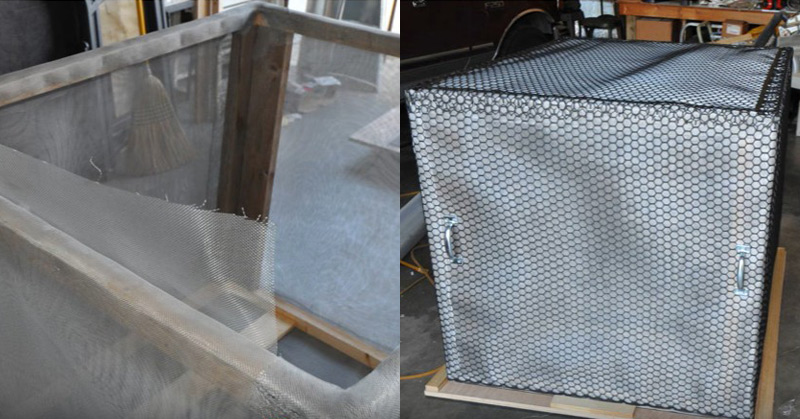Faraday Shields: The Unsung Heroes of Electronics Defense
In an increasingly digital world, our dependence on electronic devices keeps to grow, making the defense of these important assets more critical than ever. With the likely threats posed by electromagnetic interference, electrical surges, and even intentional attacks like electric pulses, it is crucial to consider suitable protective measures. Enter the Faraday cage, a remarkable invention that serves as a defense against unnecessary electrical interference, ensuring the protection of your electronics.
Faraday cages come in various forms and sizes, each tailored to satisfy different needs and situations. From military applications to consumer electronics, understanding the characteristics, substances, and setups available can help you make an informed choice. Whether you are a survivalist looking to safeguard your devices, a corporation seeking to protect classified information, or simply a gadget enthusiast wanting to ensure your devices remain safe, this write-up will explore all aspects of Faraday cages and guide you in picking the right one for your requirements.
Key Considerations For Picking a Faraday Cage
While picking a Faraday cage, understanding its intent is essential. Whether you need it for safeguarding private electronics, data security, or overall emergency preparedness will affect your decision. Consider what specific threats you are defending against, such as EM interference, radio frequency interference, or additional types of signal interference. This understanding will help you narrow down your choices and choose a cage that satisfies your requirements efficiently.
Material plays a crucial role in the efficacy of a Faraday enclosure. Not all metals provide the identical level of shielding effectiveness. For instance, copper are popular materials due to their conductivity properties, but the density and fabrication method also matter. A properly built cage that uses the appropriate materials will ensure optimal protection against invasive signals and noise. Always review the specifications to establish which metal will work best for your purposes.
Size is another important consideration when choosing a Faraday enclosure. get redirected here need to verify that the cage can accommodate all the equipment you wish to protect without cramming. Consider both the internal dimensions and the outside space where the cage will be stored. Additionally, if you intend to move it frequently, a more mobile option may be recommended. Balancing size with mobility and usability will help you make an knowledgeable choice that matches your specific situation.

Grasping the Efficiency of Electromagnetic Shields
Electromagnetic shielding cages are exceptionally effective in shielding electronic devices from EM fields, making them a vital protective measure in various scenarios. The theory behind a Faraday cage is basic: when an outside electrical charge impacts the cage, the charge spreads itself across the surface, successfully canceling the electric field inside. This ensures that sensitive electronics remain unharmed by foreign electromagnetic interference, such as that produced by thunderbolts or radio frequency signals.
The effectiveness of a Faraday cage is influenced by several factors, including its substance, scale, and structure. Metals like copper and aluminum are often used due to their superior conductivity, which improves their protective performance. A continuous structure can provide enhanced protection compared to a network structure, although the former may still be viable depending on the application's detailed needs. It is also crucial to factor in the range of frequencies of the signals you wish to stop, as distinct materials perform unequally across varying frequencies.
To ensure optimal effectiveness, proper connection to ground and closure of the cage are important. Merely https://davenport-langston.hubstack.net/creating-a-faraday-cage-for-outdoor-adventures-tips-and-techniques or unconnected sections can weaken its ability to shield against EM fields. Regular maintenance and testing can help verify its performance over time, so users can be certain that their electronics are protected. Faraday cages serve not only as shields but as a means of protecting our technology in an progressively electromagnetic world.
Real-World Uses and Prospects of Faraday Enclosures
Faraday shields have found varied applications across various fields, demonstrating their adaptability beyond the domain of electronics protection. In labs, these designs are critical for investigations that require a managed electromagnetic setting. They aid in protecting sensitive machinery from external RFI, thereby ensuring the accuracy of data. Additionally, certain fields have adopted Faraday cages for assessing products against EMC standards, making them indispensable in product development.
Looking to the prospects, advancements in Faraday cage technology are on the rise, motivated by the increasing need for effective defenses against electromagnetic hazards. Advances in materials, such as lightweight materials that retain robust protection features, are being investigated. Furthermore, the combination of advanced technology into Faraday cages could enhance their capabilities, allowing users to observe EM fields and refine safety in actual time. This evolution could lead to more efficient designs that cater to the needs of both consumers and professionals.
As the need on electronic gadgets continues to grow, particularly in intelligent residences and IoT systems, the demand for dependable Faraday cages will likely rise. Future developments may focus on creating mobile options that merge convenience with strong protection against harmful waves. This growing interest in Faraday cage technology underscores the importance of ongoing investment and progress, ensuring that these safeguarding frameworks remain significant in our quickly evolving technological landscape.